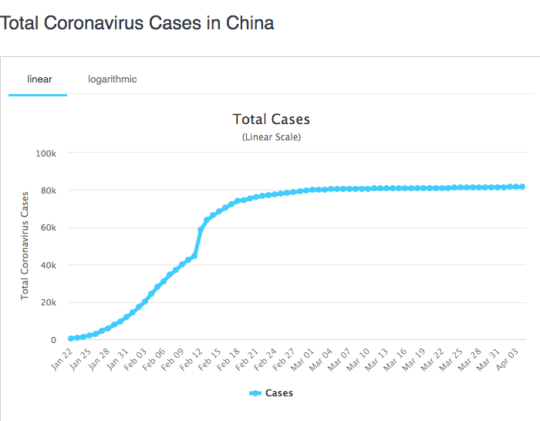In the past, I’ve criticized claims that 40,000 Wuhan residents died of Covid19, roughly 16 times the official total. While the official total undoubtedly missed some cases, I find it implausible (but not impossible) that it was that far off.
Most experts believe the actual mortality rate from coronavirus is around 1%, or perhaps 2% at most, if one accounts for all the mild cases that are never tested. And unlike Italy, Wuhan does not have a large population over age 70. So the claim that Wuhan had 40,000 deaths is equivalent to a claim that it had 2 to 4 million cases, in a city of 11 million.
A new study of the genetic makeup of numerous Covid19 viruses, suggests that as of February 8 the entire world had about 55,800 cases, with a 95% confidence interval around 17,500 and 194,400:
Here, we use a phylodynamic approach incorporating 53 publicly available novel coronavirus (nCoV) genomes to the estimate underlying incidence and prevalence of the epidemic. This approach uses estimates of the rate of coalescence through time to infer underlying viral population size and then uses assumptions of serial interval and heterogeneity of transmission to provide estimates of incidence and prevalence. We estimate an exponential doubling time of 7.2 (95% CI 5.0-12.9) days. We arrive at a median estimate of the total cumulative number of worldwide infections as of Feb 8, 2020, of 55,800 with a 95% uncertainty interval of 17,500 to 194,400. Importantly, this approach uses genome data from local and international cases and does not rely on case reporting within China.
February 8th was roughly half way through the Chinese epidemic, with 37,198 reported cases. However, on February 12 China changed its reporting methods and the official caseload jumped sharply. Thus we can infer that even as early as February 8th the caseload was higher than reported, at least 40,000.
Of course there were also many cases that had not been tested, so there could easily have been 80,000 or 120,000 cases by that day. But given that the entire world likely had no more than 200,000 cases on February 8, and given that China was roughly half way through its epidemic by that time, it seems very unlikely that Wuhan ever had 2 to 4 million cases. And if you want to argue that the Chinese underreporting occurred after February 8th, you run into all sorts of problems. There is very clear evidence that the epidemic slowed sharply in China in mid-February. And as mentioned above, on February 12 the reported caseload in China jumped sharply as the government attempted to make the figures more accurate.
The estimate of 40,000 deaths was based on the number of burial urns being order by Wuhan mortuaries. Unless someone can discredit this paper, I’ll go with the phylodynamic approach to virus evolution as being more accurate than counting burial urns.
It’s fine to hate and distrust the Chinese government; I do as well. But that’s no excuse for not confronting reality. If China got the epidemic under control, we need to know that. Even more importantly, we need to know how democratic countries in East Asia got their epidemics under control without shutting down their entire economies.
HT: Razib Khan
